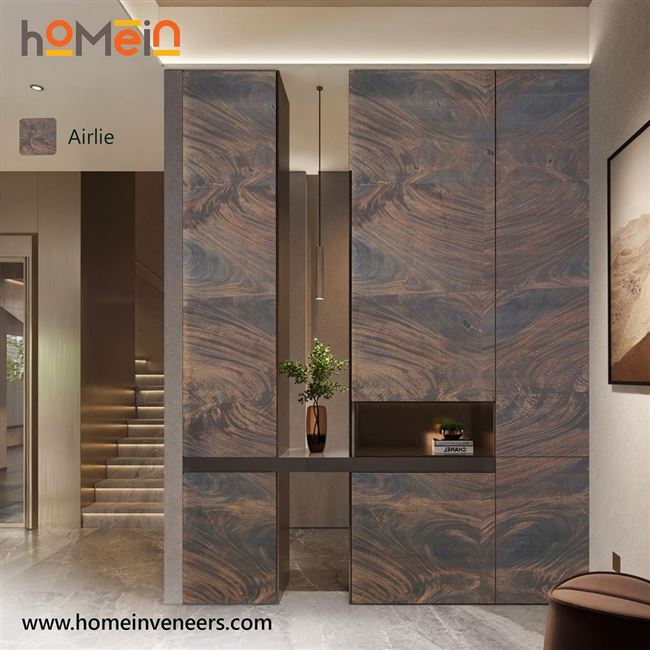Introduction:
When it
comes to choosing between wood veneers and solid wood for your project, it's
important to understand the differences and benefits of each option. In this
blog post, we will explore the key factors to consider when deciding between
wood veneers and solid wood, helping you make an informed decision that best
suits your needs and preferences.

What
are Wood Veneers?
Wood
veneers are thin slices of real wood that are typically glued onto a core
material to create a finished product. These veneers offer the natural beauty
and texture of real wood while also being more cost-effective and
environmentally friendly compared to solid wood options.
Pros
and Cons of Wood Veneers
One of
the main advantages of wood veneers is their ability to provide a consistent
appearance without the natural imperfections that can be found in solid wood.
Additionally, wood veneers are more resistant to warping and cracking, making
them a durable option for furniture and cabinetry. However, one potential
downside of wood veneers is that they may not be as easily repairable as solid
wood in the event of damage or wear over time. It is important to weigh these
factors when considering whether wood veneers are the right choice for your
project.
What
is Solid Wood?
Solid
wood is exactly what it sounds like - wood that is solid throughout, without
any layers or veneers. It is typically more durable and can withstand more wear
and tear than wood veneers. Solid wood also has a timeless, natural beauty that
many people prefer over the look of veneers. However, solid wood can be more
expensive and may require more maintenance to keep it looking its best over
time. Ultimately, the choice between solid wood and wood veneers comes down to
personal preference, budget, and the specific needs of the project at hand.
Pros
and Cons of Solid Wood
Solid
wood furniture is known for its durability and timeless beauty, making it a
popular choice for many people. Its solid construction means it can withstand
more wear and tear than wood veneers, ensuring longevity. However, solid wood
furniture tends to be more expensive and may require more maintenance to keep
it looking its best over time. Despite these drawbacks, the natural beauty and
quality of solid wood make it a worthwhile investment for those who value
craftsmanship and longevity in their furniture choices. Ultimately, the
decision to choose solid wood over wood veneers will depend on personal
preference, budget constraints, and the specific needs of the project at hand.
Cost
Comparison
When
comparing the cost of solid wood furniture to wood veneers, it is important to
consider the long-term benefits and durability that solid wood offers. While
solid wood furniture may come with a higher price tag upfront, its ability to
withstand wear and tear over time can make it a more cost-effective option in
the long run. Additionally, the timeless beauty and quality of solid wood can
add value to a space and create a sense of luxury that may be worth the
investment for those looking for lasting pieces. Ultimately, weighing the
initial cost against the durability and aesthetic appeal of solid wood can help
determine if it is the right choice for your budget and design preferences.
Durability
and Maintenance
When it
comes to durability and maintenance, solid wood furniture often requires
minimal upkeep compared to other materials. With proper care, such as regular
dusting and occasional polishing, solid wood pieces can last for generations
without losing their beauty or structural integrity. This low maintenance
factor can save time and money in the long term, making solid wood furniture a
practical choice for those seeking longevity and ease of care in their home
furnishings.
Environmental
Impact
In terms
of environmental impact, solid wood furniture is a sustainable choice as it is
made from natural, renewable resources. By choosing solid wood furniture, you
are supporting responsible forestry practices and reducing the demand for
non-renewable materials. Additionally, solid wood furniture can be easily
recycled or repurposed at the end of its lifespan, further reducing its
environmental footprint. Making environmentally conscious choices in your home
furnishings can contribute to a healthier planet for future generations.
Conclusion:
Making the Right Choice
In
conclusion, opting for solid wood furniture not only adds a touch of warmth and
beauty to your home, but also aligns with your values of sustainability and
environmental responsibility. By investing in pieces that are durable,
timeless, and eco-friendly, you are making a positive impact on the planet while
creating a space that reflects your commitment to ethical consumerism.
Ultimately, choosing solid wood furniture is not just about furnishing your
home - it's about making the right choice for both your lifestyle and the
environment.
For More Related Contents Visit Our
Website:
Website: https://homeinveneers.com
Follow Us
On: Whatsapp, Facebook, Instagram, YouTube, LinkedIn, Pinterest
|

